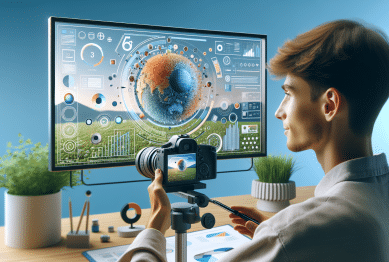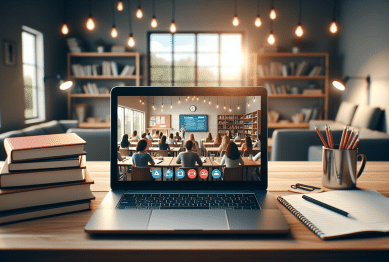In recent years, the push for productivity in educational settings has reached new heights. Students, educators, and even parents often prioritize high output and measurable results. But at what cost does this drive come? Are we truly fostering deeper learning experiences, or are we simply focusing on getting more done, faster? In this article, we explore the potential drawbacks of overvaluing productivity in learning, and why a shift toward understanding and reflection might be a more sustainable and effective approach.

The Rise of Productivity in Education
With the increasing reliance on standardized testing, assessment metrics, and productivity tools, the landscape of modern education is more results-driven than ever. The common belief is that higher productivity, whether measured in terms of homework completion, test scores, or course attendance, directly correlates with better learning outcomes.
However, the focus on productivity can sometimes overshadow the core principles of learning: critical thinking, problem-solving, and emotional intelligence. When students are merely taught to complete tasks efficiently, they may miss out on opportunities for deeper engagement with the material, meaningful collaboration, and personal growth.
Productivity vs. Depth of Learning
One of the major drawbacks of overvaluing productivity is the risk of reducing learning to a set of tasks or checkboxes. Students might complete an assignment quickly, but if the focus is solely on getting it done, the quality of their understanding may be compromised. This is particularly true in subjects that require higher-order thinking, such as literature, philosophy, or social studies.
When we place an overwhelming emphasis on completing tasks in a short amount of time, we also run the risk of encouraging surface-level learning. Instead of diving deep into a concept and grappling with its complexities, students might only skim the surface to finish the work as quickly as possible. In the long run, this undermines the goal of education: to equip students with the knowledge and skills to think critically and solve problems in the real world.
A study conducted by the University of California found that students who are rushed to complete tasks tend to have lower retention rates, as they are unable to reflect on what they have learned (Dunlosky et al., 2013). While productivity tools and strategies might help students organize their time more efficiently, they do not necessarily lead to better learning outcomes.
Burnout and Mental Health Concerns
Another significant consequence of overvaluing productivity in education is the increasing pressure it places on students. In a culture where the expectation is to “always be on” and continuously produce, many students face burnout and mental health issues. The drive for constant productivity leaves little room for rest, creativity, or reflection.
The emphasis on productivity can cause students to feel as though their value is tied to the amount of work they can produce. This creates a stressful environment where students might prioritize getting good grades or meeting deadlines over their mental well-being. According to the American Psychological Association, academic stress has been linked to higher rates of anxiety, depression, and sleep disturbances in students (APA, 2019).
This can be particularly damaging during critical learning periods, such as during exam preparation or high-stakes assessments. When productivity becomes the sole focus, students may become more fixated on results and less on developing the knowledge and skills that are truly valuable for long-term learning and personal growth.
The Value of Slow Learning
In contrast to the fast-paced, productivity-driven model, slow learning emphasizes depth over speed. Slow learning advocates for a more thoughtful approach to education, one that prioritizes understanding over completion. Students are encouraged to take their time with complex ideas, allowing space for questions, mistakes, and critical reflection.
The benefits of slow learning are manifold. Research has shown that when students are given the time and opportunity to reflect on what they’ve learned, they are more likely to retain information and apply it in new contexts. Slow learning encourages critical thinking, creative problem-solving, and deeper engagement with the material. It also promotes better mental health by alleviating the pressure of constant deadlines and productivity expectations.
For example, studies have found that students who engage in project-based learning, which often involves extended periods of inquiry and reflection, perform better on problem-solving tasks and show higher levels of creativity compared to those who focus on rote memorization and standardized testing (Dewey, 1938). Slow learning enables students to build a more robust understanding of the material, which can lead to greater long-term success.
Rethinking Productivity in Education
While productivity is not inherently bad, the way we define and measure it in education may need rethinking. It’s essential to recognize that learning is not a linear process. Speed and efficiency are often celebrated in our modern educational systems, but these metrics do not always align with genuine intellectual growth.
In fact, promoting a balanced approach to learning—one that includes both productivity and reflection—could lead to better outcomes for students. When students are encouraged to take time to explore topics deeply, ask questions, and make connections across subjects, they develop not only academic skills but also life skills that are valuable beyond the classroom.
This approach does not mean abandoning assessments or productivity tools, but rather integrating them into a larger framework that values thoughtful engagement over mere output. By acknowledging that true learning often takes time and reflection, educators can create a more holistic learning environment that fosters both knowledge and personal development.
Moving Toward a Balanced Approach
To achieve a balance between productivity and learning depth, several strategies can be implemented:
- Emphasize Reflection and Self-Assessment: Allow students time to reflect on what they’ve learned. Incorporate self-assessment techniques where students can evaluate their progress and identify areas for improvement.
- Encourage Collaborative Learning: Collaboration allows students to share ideas, engage in meaningful discussions, and learn from one another. Group work can provide a more in-depth understanding of complex topics.
- Create Space for Creativity: Incorporate activities that encourage creativity, critical thinking, and problem-solving. Projects, open-ended questions, and explorations can provide opportunities for students to think deeply and make meaningful connections.
- Promote Well-being: Recognize the importance of mental health and stress management. Offer students regular breaks, flexibility in deadlines, and opportunities for rest and relaxation.
- Focus on Process, Not Just Product: Shift the focus from purely results-driven learning to valuing the process itself. Encourage students to explore topics without the pressure of constant deadlines or expectations for immediate results.
Conclusion
In conclusion, while productivity in learning is important, it should not be the sole focus of educational systems. Overvaluing productivity can lead to shallow learning, stress, and burnout, undermining the very purpose of education. A more balanced approach, where depth of understanding is prioritized, could result in better learning outcomes and healthier students.
By embracing slow learning, reflection, and creativity, we can foster an educational environment that values both productivity and genuine understanding. In this way, we can prepare students not only for exams but for a lifetime of critical thinking, problem-solving, and personal growth.
References
- American Psychological Association. (2019). Stress in America: The State of Our Nation. American Psychological Association. Available at: https://www.apa.org (Accessed: 30 July 2025).
- Dewey, J. (1938). Experience and Education. Macmillan. Available at: https://www.amazon.com (Accessed: 30 July 2025).
- Dunlosky, J., et al. (2013). Improving Students’ Learning with Effective Learning Techniques: Promising Directions from Cognitive and Educational Psychology. Psychological Science in the Public Interest, 14(1), 4–58. Available at: https://journals.sagepub.com (Accessed: 30 July 2025).









